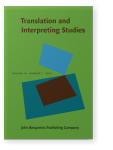Vol. 16:1 (2021) ► pp.101–123
Measuring the usability of machine translation in the classroom context
Usability is a key factor for increasing adoption of machine translation. This study aims to measure the usability of machine translation in the classroom context by comparing translation students’ machine translation post-editing output with their manual translation in two comparable translation tasks. Three dimensions of usability were empirically measured: efficiency, effectiveness, and satisfaction. The findings suggest that machine translation post-editing is more efficient than human translation and post-editing produces fewer errors than human translation. While the types of errors vary, errors in terms of accuracy outnumber those related to fluency. In addition, participants perceive the amount of time and work that is saved when post-editing to be greater benefit than the overall utility of post-editing. Likewise, students report a strong desire to learn post-editing skills in training programs.
Article outline
- Introduction
- Relevant research
- Usability and its assessment
- Usability and machine translation
- Usability assessment framework of MT
- Methodology
- Participants
- Instruments
- Translog-II
- Questionnaire
- Quality assessment metrics
- Translation tasks
- Translation direction
- Text selection
- Metrics for text difficulty, length, and readability
- Scenario
- Data collection and procedure
- Results
- Efficiency
- Effectiveness
- Error count
- Error type
- Satisfaction
- Discussion
- Conclusion
- Acknowledgements
- Note
-
References
